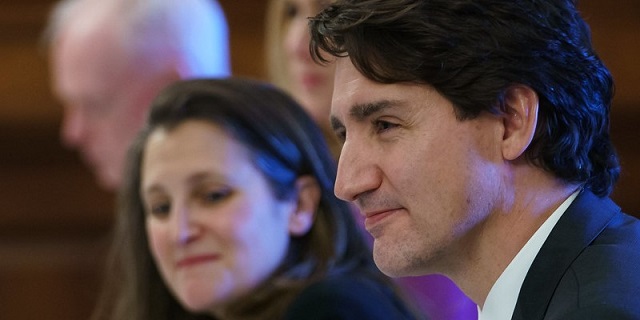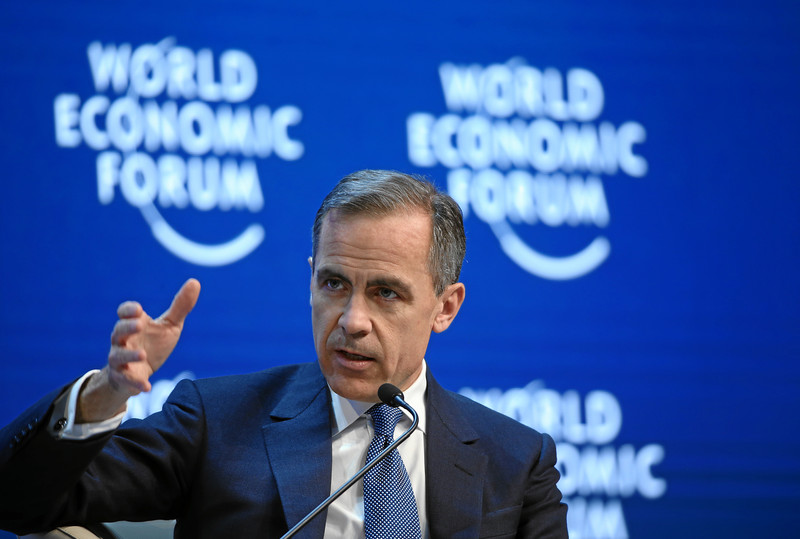Fraser Institute
Federal government should have taken own advice about debt accumulation

From the Fraser Institute
Authors: Grady Munro Jake Fuss
In 2024/25 the federal government now expects to pay $54.1 billion in debt interest, or $1,331 per Canadian, which is $2.0 billion more than it plans to spend on health care transfers to provinces.
In the foreword of the Trudeau government’s recent budget, Finance Minister Chrystia Freeland declared that, “it would be irresponsible and unfair to pass on more debt to the next generations.” Minister Freeland is absolutely right—if only she had listened to her own advice.
Fairness was the purported theme of this federal budget and nearly every new policy is presented as something that will help make life fairer for Canadians—especially younger generations. But the glaring contradiction is that partly due to all of the new spending on these policies, the Trudeau government is doing the very thing it admits is “unfair” and saddling future generations with hundreds of billions in added debt.
By 2027/28, the Trudeau government plans to add $395.6 billion to the total (gross) amount of debt held federally, which is $180.0 billion more than it planned to add just last spring. Overall, gross debt is projected to increase by nearly 20 per cent over the next four years. Adjusting for population growth and inflation during this period, by the end of 2027/28 every Canadian will be responsible for $2,301 more in gross federal debt than they are currently.
Much of this added debt stems from the introduction of new programs, which have caused federal program spending (total spending minus debt interest) over the next four years to be an expected $77.2 billion higher than was forecasted last spring. And though the Trudeau government will increase capital gains taxes to try and pay for this new spending, much of the new spending will still be financed through borrowing. Indeed, combined deficits from 2024/25 to 2027/28 are $44.7 billion higher than forecasted in last year’s budget, and there is no balanced budget in sight at all.
The problem with accumulating substantial amounts of debt, and why Minister Freeland is right when she asserts that it’s “irresponsible and unfair,” is that a growing government debt burden imposes costs on Canadians now and in the future.
One of the most important consequences of government debt are debt interest payments. These interest payments represent taxpayer dollars that don’t go towards any programs or services for Canadians, and have grown to impose a significant burden on federal finances. Specifically, in 2024/25 the federal government now expects to pay $54.1 billion in debt interest, or $1,331 per Canadian, which is $2.0 billion more than it plans to spend on health care transfers to provinces.
While debt interest costs represent a more immediate impact, debt accumulated today must also ultimately be paid for by future generations, again in the form of higher taxes. In fact, research suggests that this effect may be disproportionate, with one dollar borrowed today needing to be paid back by more than one dollar in future taxes.
One study estimates that Canadians aged 16 can expect to pay the equivalent of $29,663 over their lifetime in additional personal income taxes as a consequence of rising federal debt. Older age groups shoulder a much smaller burden in comparison. A 65-year-old can expect to pay $2,433 over their lifetime in additional personal income taxes due to rising federal debt.
The outsized burden of federal debt borne by younger generations of Canadians is hardly what any reasonable person would consider “fair.”
For all its talk about fairness and helping the next generation of Canadians, the Trudeau government’s incessant spending and substantial debt accumulation will simply result in young Canadians paying disproportionately higher taxes in the future. Does that seem fair to you?
Business
Carney and other world leaders should recognize world’s dependence on fossil fuels

From the Fraser Institute
By Julio Mejía and Elmira Aliakbari
Simply put, despite trillions invested in the energy transition, the world is more dependent on fossil fuels today than when the United Nations launched its first COP. No wonder that ahead of COP30, leading voices of the net-zero-by-2050 agenda, including Bill Gates, are acknowledging both the vital role of fossil fuels on the planet and the failure of efforts to cut them.
On the heels of his first federal budget, which promises more spending to promote a “green economy,” Prime Minister Carney will soon fly to Brazil for COP30, the 30th United Nations climate summit. Like the former Trudeau government, the Carney government has pledged to achieve “net-zero” emissions in Canada—and compel other countries to pursue net-zero—by 2050. To achieve a net-zero world, it’s necessary to phase out fossil fuels—oil, natural gas, coal—or offset their CO2 emissions with technologies such as “carbon capture” or large-scale tree planting.
But after trillions of dollars spent in pursuit of that goal, it appears more unrealistic than ever. It’s time for world leaders, including Canada’s policymakers, to face reality and be honest about the costly commitments they make on behalf of their citizens.
For starters, carbon capture—the process of trapping and storing carbon dioxide so it’s unable to affect the atmosphere—is a developing technology not yet capable of large-scale deployment. And planting enough trees to offset global emissions would require vast amounts of land, take decades to absorb significant CO2 and risk unpredictable losses from wildfires and drought. Due to these constraints, in their net-zero quest governments and private investors have poured significant resources into “clean energy” such as wind and solar to replace fossil fuels.
According to the International Energy Agency (IEA), from 2015 to 2024, the world’s public and private investment in clean energy totalled and estimated US$14.6 trillion (inflation-adjusted). Yet from 1995 (the first COP year) to 2024, global fossil fuel consumption increased by more than 64 per cent. Specifically, oil consumption grew by 39 per cent, natural gas by 96 per cent and coal by 76 per cent. As of 2024, fossil fuels accounted for 80.6 per cent of global energy consumption, slightly lower than the 85.6 per cent in 1995.
The Canadian case shows an even greater mismatch between Ottawa’s COP commitments and its actual results. Despite billions spent by the federal government on the low-carbon economy (electric vehicle subsidies, tax credits to corporations, etc.), fossil fuel consumption in our country has increased by 23 per cent between 1995 and 2024. Over the same period, the share of fossil fuels in Canada’s total energy consumption climbed from 62.0 to 66.3 per cent.
Simply put, despite trillions invested in the energy transition, the world is more dependent on fossil fuels today than when the United Nations launched its first COP. No wonder that ahead of COP30, leading voices of the net-zero-by-2050 agenda, including Bill Gates, are acknowledging both the vital role of fossil fuels on the planet and the failure of efforts to cut them.
Why has this massive effort, which includes many countries and trillions of dollars, failed to transition humanity away from fossil fuels?
As renowned scholar Vaclav Smil explains, it can take centuries—not decades—for an energy source to become globally predominant. For thousands of years, humanity relied on wood, charcoal, dried dung and other traditional biomass fuels for heating and cooking, with coal only becoming a major energy source around 1900. It took oil 150 years after its introduction into energy markets to account for one-quarter of global fossil fuel consumption, a milestone reached only in the 1950s. And for natural gas, it took about 130 years after its commercial development to reach 25 per cent of global fossil fuel consumption at the end of the 20th century.
Yet, coal, oil and natural gas didn’t completely replace traditional biomass to meet the surging energy demand as the modern world developed. As of 2020, nearly three billion people in developing countries still relied on charcoal, straw and dried dung to supply their basic energy needs. In light of these facts, the most vocal proponents of the global energy transition seem, at the very least, out of touch.
The world’s continued reliance on fossil fuels should prompt world leaders at COP30 to exercise caution before pushing the same unrealistic commitments of the past. And Prime Minister Carney, in particular, should be careful not to keep leading Canadians into costly ventures that lead nowhere near their intended results.
Alberta
Alberta government’s plan will improve access to MRIs and CT scans

From the Fraser Institute
By Nadeem Esmail and Tegan Hill
The Smith government may soon allow Albertans to privately purchase diagnostic screening and testing services, prompting familiar cries from defenders of the status quo. But in reality, this change, which the government plans to propose in the legislature in the coming months, would simply give Albertans an option already available to patients in every other developed country with universal health care.
It’s important for Albertans and indeed all Canadians to understand the unique nature of our health-care system. In every one of the 30 other developed countries with universal health care, patients are free to seek care on their own terms with their own resources when the universal system is unwilling or unable to satisfy their needs. Whether to access care with shorter wait times and a more rapid return to full health, to access more personalized services or meet a personal health need, or to access new advances in medical technology. But not in Canada.
That prohibition has not served Albertans well. Despite being one of the highest-spending provinces in one of the most expensive universal health-care systems in the developed world, Albertans endure some of the longest wait times for health care and some of the worst availability of advanced diagnostic and medical technologies including MRI machines and CT scanners.
Introducing new medical technologies is a costly endeavour, which requires money and the actual equipment, but also the proficiency, knowledge and expertise to use it properly. By allowing Albertans to privately purchase diagnostic screening and testing services, the Smith government would encourage private providers to make these technologies available and develop the requisite knowledge.
Obviously, these new providers would improve access to these services for all Alberta patients—first for those willing to pay for them, and then for patients in the public system. In other words, adding providers to the health-care system expands the supply of these services, which will reduce wait times for everyone, not just those using private clinics. And relief can’t come soon enough. In Alberta, in 2024 the median wait time for a CT scan was 12 weeks and 24 weeks for an MRI.
Greater access and shorter wait times will also benefit Albertans concerned about their future health or preventative care. When these Albertans can quickly access a private provider, their appointments may lead to the early discovery of medical problems. Early detection can improve health outcomes and reduce the amount of public health-care resources these Albertans may ultimately use in the future. And that means more resources available for all other patients, to the benefit of all Albertans including those unable to access the private option.
Opponents of this approach argue that it’s a move towards two-tier health care, which will drain resources from the public system, or that this is “American-style” health care. But these arguments ignore that private alternatives benefit all patients in universal health-care systems in the rest of the developed world. For example, Switzerland, Germany, the Netherlands and Australia all have higher-performing universal systems that provide more timely care because of—not despite—the private options available to patients.
In reality, the Smith government’s plan to allow Albertans to privately purchase diagnostic screening and testing services is a small step in the right direction to reduce wait times and improve health-care access in the province. In fact, the proposal doesn’t go far enough—the government should allow Albertans to purchase physician appointments and surgeries privately, too. Hopefully the Smith government continues to reform the province’s health-care system, despite ill-informed objections, with all patients in mind.
-

 armed forces1 day ago
armed forces1 day agoIt’s time for Canada to remember, the heroes of Kapyong
-

 Digital ID1 day ago
Digital ID1 day agoCanada moves forward with digital identification for federal benefits seekers
-

 Daily Caller23 hours ago
Daily Caller23 hours agoLaura Ingraham Presses Trump On Allowing Flood Of Chinese Students Into US
-

 Opinion2 days ago
Opinion2 days agoThe Germans called her the ‘White Mouse’ for her elusiveness
-

 Daily Caller24 hours ago
Daily Caller24 hours agoUS Nuclear Bomber Fleet Shares Fence With Trailer Park Linked To Chinese Intel-Tied Fraudster
-

 Alberta1 day ago
Alberta1 day agoSchool defunding petition in Alberta is a warning to parents
-

 espionage23 hours ago
espionage23 hours agoChinese-Owned Trailer Park Beside U.S. Stealth Bomber Base Linked to Alleged Vancouver Repression Case
-

 Agriculture2 days ago
Agriculture2 days agoBovaer Backlash Update: Danish Farmers Get Green Light to Opt Out as UK Arla Trial Abruptly Ends!










